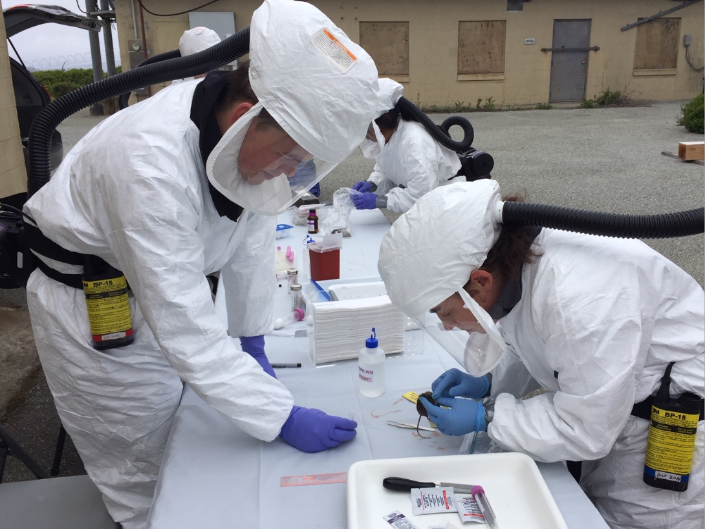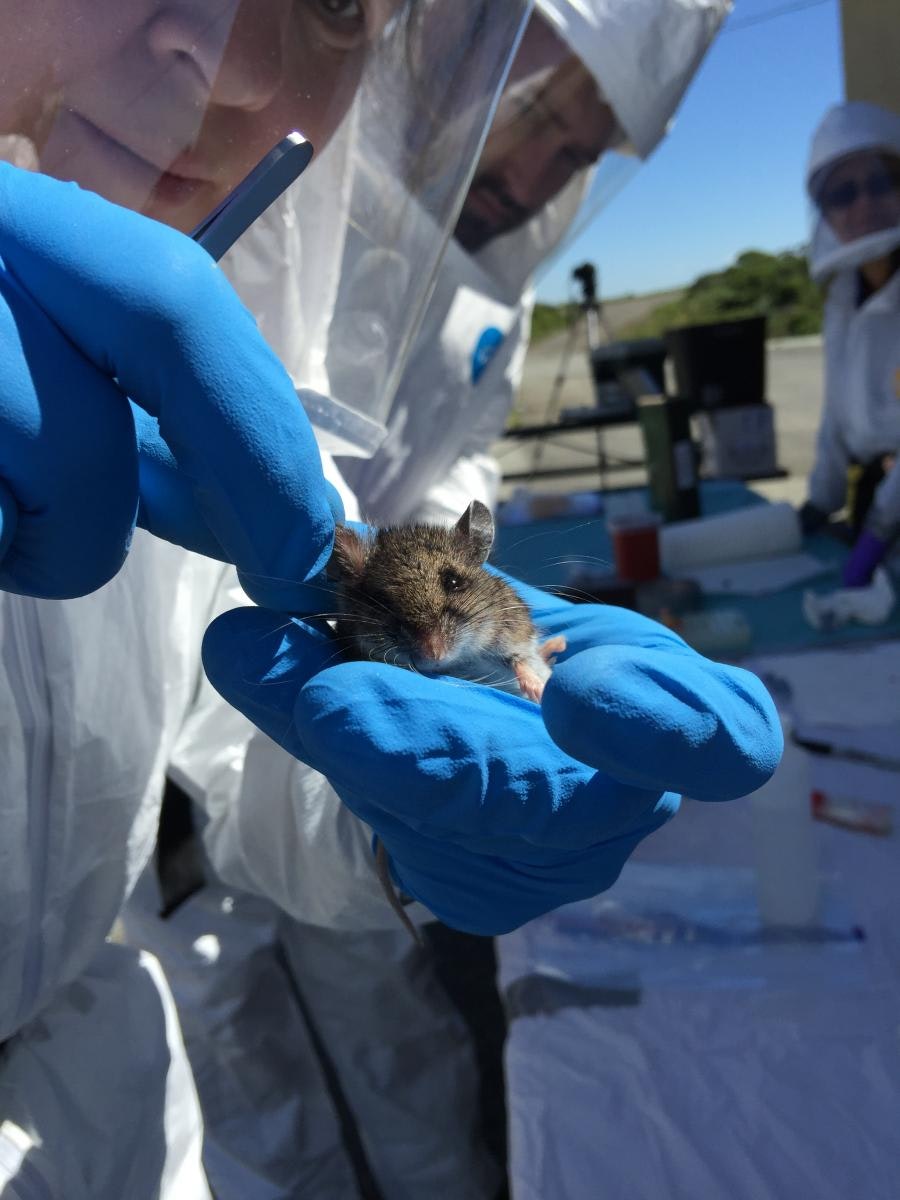Rodent Surveillance and Data
Rodents can spread many diseases. These diseases can be spread to humans directly, through handling of rodents, through contact with rodent feces, urine, or saliva, or through rodent bites. Diseases carried by rodents can also be spread to humans indirectly, through ticks, mites, or fleas that have fed on an infected rodent.

This District conducts hantavirus and plague surveillance in rural areas or areas adjacent to open space that are likely to have deer mice. 100 live-capture traps are set per surveillance event. Each rodent captured is anesthetized, body measurements and health checks are conducted, and any parasites, such as fleas or ticks, are removed. A small blood sample is then collected. After recovering from anesthesia, each rodent is released at the location where it was trapped.
Blood samples are tested for the presence of antibodies to hantavirus and plague at the California Department of Public Health Vector-Borne Disease Section (CDPH-VBDS). Positive results are reported to the District, and follow-up trapping may be conducted. You can find information about hantavirus findings across California in the annual CDPH report HERE.
The District may also conduct surveillance for hantavirus upon the recommendation of CDPH-VBDS in response to a human case or request for samples.

The following tables include rodent surveillance data from District collections over the past several years. Please note that hantavirus prevalence rates for each year are likely inaccurate due to small sample sizes and limited sampling. Actual prevalence of hantavirus in deer mice is likely close to 11% in high-risk areas.
In addition to the data presented below, surveillance was also conducted in Belmont in 2016 and in La Honda in 2018. No deer mice were collected and the results of these surveys are not reported here.
The District has also tested house mice (Mus musculus), roof rats (Rattus rattus), pinyon mice (P. truei), parasitic mice (P. californicus), dusky footed woodrats (Neotoma fuscipes), ground squirrels (Otospermophilus beecheyi) and tree squirrels (Sciurus niger and S. carolinensis) for the presence of hantavirus. None of these species were found to be infected with the Sin Nombre virus and their capture numbers are not reported here.
San Bruno Mountain Peromyscus maniculatus Hantavirus Survey Data
| Year | Number of traps set | Number of mice captured | Capture rate | Number positive for hantavirus | Infection prevalence |
|---|---|---|---|---|---|
| 1998 | 100 | 43 | 43% | 2 | 4.6% |
| 1999 | 100 | 24 | 24% | 1 | 4.2% |
| 2000 | 200 | 2 | 1% | 0 | 0% |
| 2001 | 75 | 19 | 25% | 3 | 15.8% |
| 2013 | 50 | 3 | 6% | 0 | 0% |
| 2014 | 100 | 14 | 14% | 0 | 0% |
| 2015 | 100 | 4 | 4% | 0 | 0% |
| 2016 | 100 | 15 | 15% | 3 | 20% |
| 2017 | 200 | 26 | 26% | 6 | 23.1% |
| 2018 | 100 | 19 | 19% | 4 | 21.0% |
| Overall | 1125 | 169 | 15% | 19 | 11.2% |
Montara Peromyscus maniculatus Hantavirus Survey Data
| Year | Number of traps set | Number of mice captures | Capture rate | Number positive for hantavirus | Infection prevalence |
|---|---|---|---|---|---|
| 2016 | 100 | 13 | 13% | 1 | 7.7% |
| 2017 | 200 | 22 | 11% | 4 | 18.2% |
| Overall | 300 | 35 | 12% | 5 | 14.3% |
Other San Mateo County locations Peromyscus maniculatus Hantavirus Survey Data
| Year | Location | Number of traps set | Number of mice captured | Number positive for hantavirus | Infection prevalence |
|---|---|---|---|---|---|
| 2014 | Pacifica | 100 | 26 | 0 | 0% |
| 2017 | Belmont | 100 | 2 | 0 | 0% |
| Overall | 200 | 28 | 0 | 0% |
Page last reviewed: September 16, 2025
